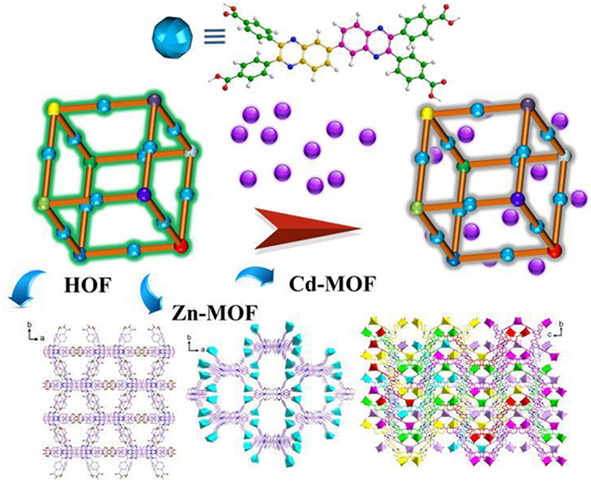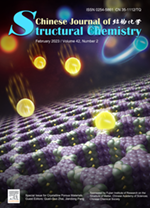Smart crystalline frameworks constructed with bisquinoxaline-based component for multi-stimulus luminescent sensing materials
Peng-da Liu, Ao-gang Liu, Peng-min Wang, Yuan Chen* , Bao Li *
Chin. J. Struct. Chem., 2023, 42: 100001. DOI: 10.1016/j.cjsc.2022.100001
February 15, 2023
Metal-organic framework, Hydrogen bonding organic framework, Luminescent sening, Bisquinoxaline group, Sensor
ABSTRACT
Crystalline materials with well-defined structures and ordered molecular arrays can provide a new research platform to fabricate new smart materials with excellent stimulus response properties. Among them, Luminescent Metal-Organic Frameworks (LMOFs) and Hydrogen-bonding Organic Frameworks (HOFs) show great promise for fluorescence detection to different pollutants. In order to further extend the smart sensing frameworks and enhance the relevant sensing performance, the present work specifically selects 4,4′,4″,4‴-([6,6′-biquinoxaline]-2,2′,3,3′-tetrayl)tetrabenzoic acid (H4L) consisting of the bisquinoxaline functional group as an optical response group, and HOF (HUST-25, HUST = Huazhong University of Science and Technology), Zn-MOF (HUST-26), and Cd-MOF (HUST-27) were successfully obtained. HOF could achieve the fluorescence recognition of Fe3+, MnO4−, Cr2O72−, p-nitrotoluene (4-NP), 2,4,6-trinitrotoluene (TNP) and metronidazole (MDZ). The detection range of Zn-MOF constructed using Zn ions was similar to that of HOF, but the detection sensitivity of metal cations was significantly improved. Although Cd-MOF formed a six-fold interpenetrating structure, it was still able to retain a large pore structure. The dense stacking structure increases the quinoxaline density, which effectively expanded the sensitivity and detection range of fluorescence sensing. Therefore, Cd-MOF showed better detection for nitro explosives, antibiotics, and organic small molecules with ketone groups. For example, compared to the previous literatures, Cd-MOF has a larger Ksv value for the nitro-explosive nitrobenzene (NB), indicating the very high detection sensitivity. The series frameworks can present excellent sensing properties mainly because the functional primitives can be uniformly distributed in the skeleton of the crystalline materials, forming an ordered molecular array that enables the efficient energy transfer between the external stimulus signal and the response function sites. The related results indicate that the introduction of bisquinoxaline groups with a large degree of conjugation and excellent optical properties into the frameworks can be one of the effective strategies to construct highly sensitive and universal fluorescence sensing crystalline materials.








